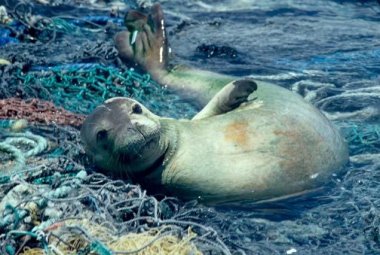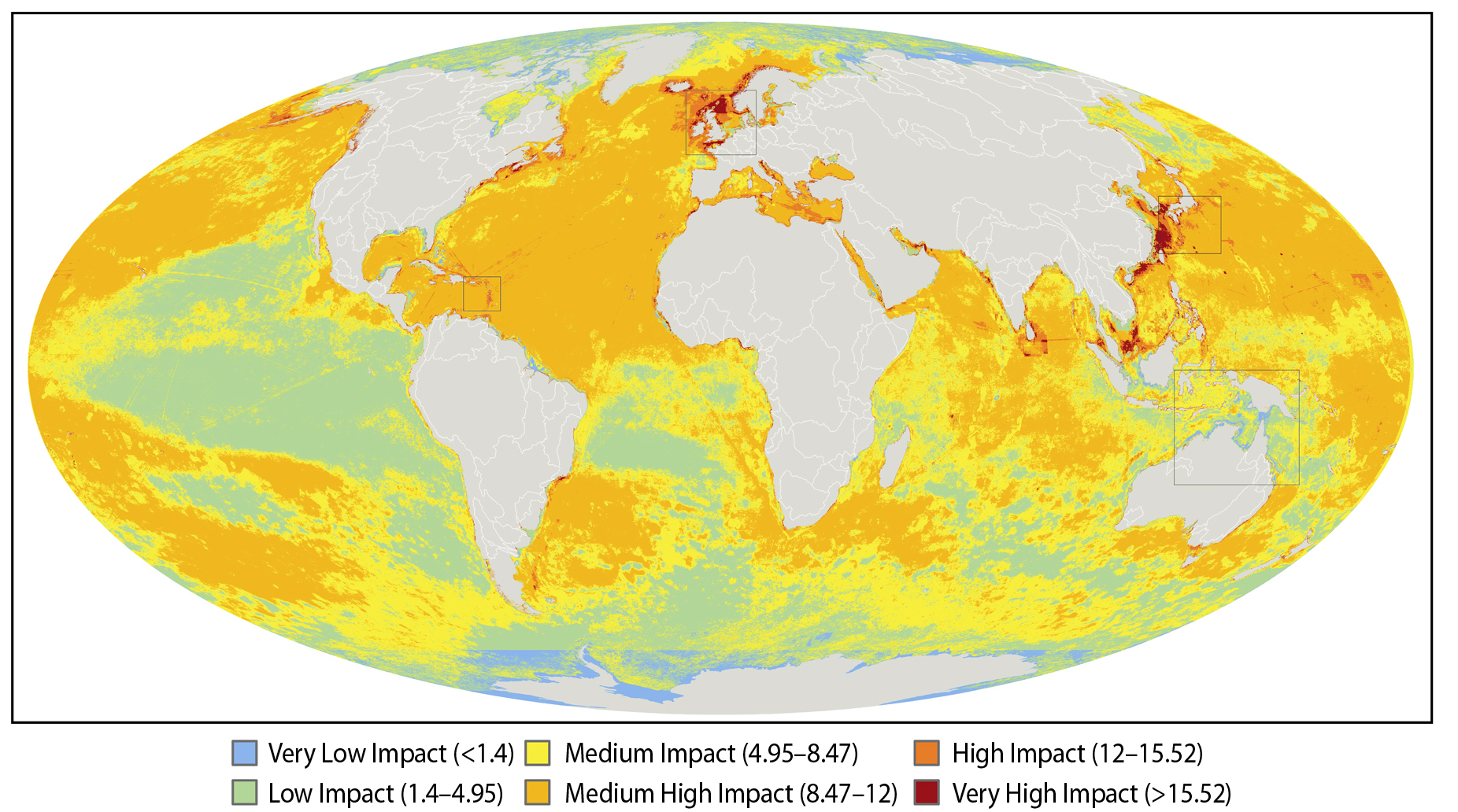Blog
News, updates, finds, stories, and tidbits from staff and community members at KAHEA. Got something to share? Email us at: kahea-alliance@hawaii.rr.com.
- In 1994, elevated sea temperatures killed over 90% of the living corals of American Samoa from the intertidal zone to a depth of 10 meters and fishing catches declined drastically in the wake of the coral death.
- Climate Change will shift rainfall patterns causing prolonged droughts in some regions. Each El Niño event has resulted in water shortages and drought in Papua New Guinea, Marshall Islands, Federated States of Micronesia, American Samoa, Samoa, Tonga, Kiribati and Fiji. More frequent El Niño events also bring an increased risk of tropical cyclones, particularly for Tuvalu, Samoa, Tonga, Cook Islands and French Polynesia.
- The potential socio-economic impacts of climate change on the smaller Pacific island countries were estimated in a series of vulnerability studies. Depending on the worst case scenario (one metre sea level rise), the studies suggest that sea level rise will have negative impacts on tourism, freshwater availability and quality, aquaculture, agriculture, human settlements, financial services and human health. Storm surges are likely to have a harmful impact on low-lying islands.
Kitty: Here's a mirror
 If Kitty Simonds (WESPAC Exec.) really believes what she wrote in this Sunday-Editorial, then this woman needs to take a good look in the mirror. She calls out the U.S. military for the harm its presence causes the people of the Pacific, when WESPAC’s own mismanagement over the last 25 years has decimated multiple fisheries here.
If Kitty Simonds (WESPAC Exec.) really believes what she wrote in this Sunday-Editorial, then this woman needs to take a good look in the mirror. She calls out the U.S. military for the harm its presence causes the people of the Pacific, when WESPAC’s own mismanagement over the last 25 years has decimated multiple fisheries here.
Yes, the U.S. military should not be stationing troops and conducting exercises in the fragile and important waters surrounding these island-nations. At the same time, WESPAC should not be tyring to exploit their resources for U.S. commercial extraction either.
WESPAC and the U.S. military: they are the left and right boots of the U.S. empiral march over the people of the Pacific.
That said, I had to laugh reading this. It is just so ironic to hear Kitty of all people advocating for more transparency and public participation in the decision-making process. (Someone please launch the pigs.)
WESPAC has been one of the worst offenders when it comes to open government. Not only is WESPAC under investigation by two federal agencies for misuse of federal funds, but we and few other groups just filed suit against them for failing to release government records under the Freedom of Information Act (FOIA).
Adding to the irony of Kitty’s argument here: there were public hearings held on the designation of additional marine monuments throughout the Pacific. I attended the one in Honolulu myself. It was conveniently located just down the block from WESPAC’s annual 3-day meeting. Unfortunately, I didn’t see any of the WESPAC representatives at that public hearing on the monuments.
Marine monuments shouldn’t have higher priority than people
By Kitty Simonds
Honolulu Star-Bulletin
January 18, 2009WestPac – The Western Pacific Regional Fishery Management Council – appreciates the Bush administration’s recognition that the newly proclaimed U.S. Pacific island marine monument waters have been “effectively regulated under the Magnuson-Stevens Act and by WestPac.” These new national monuments “are complementary strategies” to the fisheries management plans developed by the council, noted Jim Connaughton, chairman of the White House’s Council on Environmental Quality.
Under the council’s plans, a ban on all fishing from 0 to 50 fathoms (300 feet) depth has been in effect since 2004 in all of the areas. Coral reefs do not live below this depth. Pelagic fishing by vessels larger than 50 feet in length has been banned within 50 miles of the Rose Atoll wildlife refuge in American Samoa since 2002. Under the U.S. Fish & Wildlife Service National Wildlife Refuge status, commercial fishing has been banned within 12 miles of Palmyra since 2001.
The council looks forward to continuing its work to protect everyone’s interest in these areas.
However, it is concerned that the Antiquities Act, used to create these enormous marine monuments, currently bypasses the National Environmental Policy Act, which mandates an environmental review as well as an appropriate participatory process for the indigenous people and other members of the public. The Antiquities Act should be amended to require NEPA as well as congressional approval of future monuments, as it does in Wyoming and Alaska.
The U.S. Pacific Islands now account for half of the marine protected areas in the United States. Local commercial fishermen are banned from nearly a quarter of the waters surrounding the U.S. Pacific islands. The significant loss of fishing areas can be counterproductive to sustainable fishery goals. Reduction of available fishing areas often leads to increased fishing pressure in other areas. It also undermines cultural and ecological goals. Our populations consume three times the national average in seafood and should be able to eat their own fish. When local fisheries are closed, the consequence is air-freighting imported fresh fish, which has negative effects on climate change and ocean acidification by increasing the U.S. carbon footprint. The U.S. currently imports 86 percent of its seafood.
While well-regulated and monitored commercial fishing with no proven negative ecosystem effects are being banned, other activities that can harm the monument resources will be allowed. Military activities will continue and are expected to increase with the relocation of 8,000 Marines, plus their families, and 15,000 contract workers to Guam.
Military bombing in nearby Farallon de Medinilla in the Commonwealth of the Northern Mariana Islands is allowed to kill all the endangered megapodes (a flightless bird) on the island, under a Fish & Wildlife Service-issued biological opinion. Hawksbill, green and leatherback sea turtles, fruit bats and other plant and animal species are also affected by the bombing and other military activities.
The Bush administration has compared the new monuments to the Northwestern Hawaiian Islands, where monument designation has led to increased human activity from tourists, visitors and researchers. While traditional indigenous fishing is permitted, the fish must be consumed within the monument and cannot be brought back to family and communities.
The only way to realize the president’s dream for the new monuments is through much-needed funds to the U.S. Coast Guard and local government agencies to adequately patrol and enforce the waters surrounding the U.S. Pacific islands. The Marianas’ waters are within 1,500 to 2,000 miles of the Asian mainland and Southeast Asia and could be accessed by every major Asian fishing fleet.
We look forward to the promised economic bounty that the Marianas and American Samoa communities will receive from the monument designation, but hopefully, if it comes, it will not be at the expense of the environment or the indigenous people. Kitty Simonds is executive director of the Western Pacific Regional Fishery Management Council.
Citizen Groups Sue Federal Fisheries Group for Failing to Disclose Use of Funds

A lawsuit seeking basic government documents has been filed in Federal District Court against the Western Pacific Regional Fishery Management Council (WESPAC), the National Oceanic and Atmospheric Administration (NOAA), and the U.S. Department of Commerce (DOC) by the Conservation Council for Hawaii, KAHEA: The Hawaiian-Environmental Alliance (KAHEA), and the LOST FISH Coalition.
The lawsuit was filed to gain access to documents requested by the plaintiffs in a November 14, 2007, Freedom of Information Act (FOIA) request submitted to WESPAC seeking basic budget, grant, and contract information. Tina Owens from the LOST FISH Coalition said, “In addition to shedding light on the long-hidden and most basic internal operations of this controversial federal entity, the documents may also shed light on how WESPAC funds may have been used in what appears to be various lobbying campaigns to influence state and federal legislative and executive branch decisions related to marine conservation in Western Pacific waters.” Miwa Tamanaha, KAHEA Executive Director noted, “Wise, sound, community-based management requires accountability and transparency. If there is nothing improper, then there should be nothing to hide. With the situation of our ocean resources so imperiled, it is ridiculous that citizen groups should have go to these lengths to get basic information about use of our public dollars.”
WESPAC has been under scrutiny related to allegations of illegal lobbying, including actions to try and halt the NWHI and CNMI National Marine Monument declarations, and for funding the controversial Puwalu Series, a lobbying ploy to pass legislation curtailing community-based-fishing-management programs in Hawai`i. Based in Honolulu, WESPAC is the subject of at least two active federal investigations; one by the U.S. Department of Commerce Office of the Inspector General (IG), and another by the U.S. Government Accountability Office (GAO).
Tina Owens also said, “Getting any public information from WESPAC is virtually impossible, and that’s not only not right, it’s not legal. This is a federal entity, funded by taxpayers’ money and unless specific documents fall under one of a few narrow FOIA exceptions, every document in their possession must be open to the public. Back in October of 2007, the public was told by WESPAC Executive Director Kitty Simonds that WESPAC’s library and all of its documents “…are open to the public at any time,” For months I tried to access the WESPAC library and WESPAC documents, and at each turn Ms. Simonds put up new roadblocks to my access, often at significant cost and inconvenience. When she could ignore me no more, she backtracked and stated that I had to file a Freedom of Information Act request. So I did. Then she ignored that as well. What is WESPAC hiding? How can a federal entity treat the public like this? They need to realize they are answerable to the public.”
While disclosure of public documents is required under Federal Law, the WESPAC situation is made worse by WESPAC’s refusal to use uniform information procedures. “There is a shocking insensitivity of WESPAC and its executive director, Kitty Simonds, to the required open and transparent decisionmaking,” said lead counsel Peter Van Tuyn, Esq. “As President Obama states, a ‘democracy requires accountability, and accountability requires transparency.’” This lawsuit is intended to force the doors open on this rogue council and ensure that accountability.
The original FOIA requests were generated as part of the plaintiffs’ ongoing oversight of Western Pacific federal and state water ocean resource conservation issues involving the restoration and protection of the Western Pacific Ocean environment and the people who reside in the region. NOAA and the Department of Commerce are defendants because they have refused to exercise their oversight responsibilities with respect to WESPAC to help plaintiffs get the documents. “NOAA’s support of citizen groups seeking access to public records from WESPAC is crucial if we are to end overfishing and ensure science-based management.” said Marjorie Ziegler, Executive Director of Conservation Council for Hawai`i. “WESPAC is controlled by commercial fishing interests, and therefore strict NOAA oversight is critical. Ending overfishing and allowing the fish stocks to recover will benefit all of Hawai’i’s fishers, fishing communities, our endangered monk seal, threatened seabirds and our beloved honu [green sea turtles].”
The Western Pacific Regional Fishery Management Council (WESPAC) is one of eight regional councils established under the U.S. Magnuson-Stevens Fishery Management and Recovery Act to manage the nation’s offshore marine resources.
http://belammc.com/wespac/Obama_FOIA1.pdf
http://belammc.com/wespac/090115FiledLawsuit.pdf
killing the canary
From Marti:
I was listening to this on the radio, and the topic of climate change and ocean resources got me thinking.
Effects being felt by islands in the Pacific are often mentioned in the discussion about the health of our oceans as “early indicators” of the affects of climate change. Bleaching and disease in fragile coral reefs supporting marine ecosystems caused by temperture changes. Sea level rise forcing relocations of island residents. Ocean acidification with unknown consequences. Climate change leaves these islands less able to fend off effects of catastrophic storm events by degrading protective reefs. They decimate an important ocean food resources, depriving islands of their ability to maintain food independence.
Instead of clamoring to make change, and make restitution to these people and places, the continents are instead holding up Pacific islands as”canaries in the mine shaft”–harbingers of things to come for other presumably more important places like the continental U.S. or Europe.
The widely publicized NCEAS map of human impacts to the world’s oceans splits the entire Pacific region, and Hawai`i is not shown at all. (To their credit, Hawaii is there–and can be viewed in the KML version of the map, viewable in GoogleEarth.)
As a lifelong resident of one of these “canaries,” I am extremely concerned that the rapid rise in sea level and sea temperature will mean the loss of our islands – our homes, our communities and our way of life. It is likely, if not inevitable, that the hundreds of unique indigenous cultures in the Pacific–which have existed and developed over millenia–will not be able to adapt to catastrophic environmental changes occuring over the space of 50 to 100 years.
What is most frustrating is these catastrophic changes are the product of unsustainable lifestyels and practices of industrialized nations like the U.S. and Europe, not the Pacific, where the impact isbeing the most directly experienced. This occurs in the context of the well-documented legacy of post-contact 19th and 20th century Pacific imperialsm–in which world powers fought for ownership and dominance of Pacific Islands with little or no concern for the people of these places. The effects of this legacy are still keenly felt throughout Oceania.
From the Ministerial Conference on Environment and Development in Asia and the Pacific 2000:
Their report concludes:
“The options for the Pacific islands, other than continuing to berate the industrial nations on their lack of concerted action, include migration, foreshore stablilisation, resettlement and decentralisation to adapt to the impacts of climate and sea-level changes.”
While global climate change is indeed, a global problem, it is a problem with consequences unequally shared.
Add your voice! Friends of the Earth has launched a Climate Equity Campaign, urging action to assist those most impacted by climate change. Check it out here.
GAO Finds Bush Admin Failed Marine Mammals

From Allison Winter, E&E reporter:
The Bush administration has failed to provide safeguards to protect more than a dozen stocks of marine mammals from injury or death in commercial fishing nets, congressional investigators said in a report released yesterday. The Government Accountability Office found that the National Marine Fisheries Service has failed to meet its legal obligation to guard whales, dolphins and other marine mammals from entanglement in fishing gear. The 1994 amendments to the Marine Mammal Protection Act require that the agency establish “take reduction teams” for certain marine mammals to reduce accidental injuries or death in fishing gear. The agency failed to set up teams of experts to protect 14 of 30 different stocks of marine mammals that deserve protection, the report says. False killer whales off the Hawaiian Islands, bottlenose dolphins in the Gulf of Mexico and Steller sea lions in the eastern and western United States are among animals left without bycatch protection teams.
And for the rest of the stocks, NMFS lacked a “comprehensive strategy” to assess the effectiveness of its program and frequently missed deadlines to set up teams and create safety plans. For most stocks, the agency relies on incomplete, outdated or imprecise data on population size or mortality, GAO found. Federal fisheries officials told GAO they were aware of some of the limitations but did not have enough funding to implement plans or improve their data. For some marine mammal stocks, officials said a take-reduction team would be useless, since the threats to the marine mammals are not from fishing but from other sources, such as Navy sonar exercises. NMFS officials agreed with a recommendation from GAO that the agency develop a comprehensive strategy for assessing the effectiveness of the plans and the regulations. The report came as President George W. Bush this week declared three new national monuments in the Pacific Ocean — a move than won praise from environmental and marine conservation groups. Bush used the announcement as an opportunity to defend his environmental record — often praised for ocean conservation but widely criticized for its policies on public lands, endangered species and climate change.
“For an administration that is desperately trying to create a legacy of ocean stewardship before leaving office, it is disappointing to hear that they have dropped the ball on reducing incidental deaths of mammals due to commercial fishing,” said House Resources Chairman Nick Rahall (D-W.Va.), who requested the report. Rahall said the report would create a “solid road map for the tremendous work that lies ahead” and pledged to work with the incoming Obama administration to try to secure protections for whales and other marine species. The report recommends that Congress amend the existing law to specify that the teams are only required for marine mammals that interact with a fishery and change the law’s deadlines to make them easier for NMFS to comply. GAO also recommended that lawmakers require federal officials to report on progress in developing the teams and any limitations hindering the agency. “NMFS faces a very large, complex, and difficult task in trying to protect marine mammals from incidental mortality and serious injury during the course of commercial fishing operations,” the report states.
Significant and Adverse Impact... After the Fact

From yesterday’s Garden Isle News:
After many months of waiting, the Draft Environmental Impact Statement was made available to the public today, revealing many impacts the Superferry could have on the four main Hawaiian islands if operation were to continue.
The EIS assesses the direct impacts the ferry could have to the islands caused by new construction needed to support a large-capacity ferry vessel, and indirect impacts, such as affects on Hawaiian waters and cultural practices.
The report declares that the cumulative effects of the Superferry would significantly and adversely affect traffic within the vicinity of Nawiliwili, Kahului, Kawaihae and Honolulu Harbors. The large-vessel ferry could potentially impact the number of endangered humpback whales, the dispersal of inter-island invasive species and the traditional cultural practices conducted on the islands, the EIS said.
The comprehensive report declares that cultural activities within the vicinity of West Harbor in Kahului would significantly and adversely be impacted due to “new harbor improvements.” New pier construction at Kawaihae Harbor would also result in significant and adverse impacts, including those to nearby Pu`ukohola Heiau National Historic Park, obstructing views and affecting not only the rock walls of the heiau, but ceremonial activities as well, due to noise and construction.
Indirect impacts noted in the report include activities such as fishing, surfing and diving, including the potential loss of natural resources as stated in the cultural impact analyses.
The only reportedly beneficial impact reviewed in the environmental draft is that the large-capacity ferry vessel would provide to all harbors a “superior” mode of transportation for disaster planning and emergency response. The statement concludes that the vessel would increase the capabilities and response times of first responders and relief efforts.
To view the EIS in its entirety and to leave comment, visit the Department of Transportation’s Web site, hawaii.gov/dot/harbors
got footage?
From Erin Kiley, NRDC Films:
NRDC (Natural Resources Defense Council) is starting production and development on a 10-minute movie about ocean acidification, a largely unknown yet equally serious consequence of fossil fuel emissions. We will produce this short film to introduce the problem of ocean acidification, discuss its consequences, and link the issue with policy solutions for both climate change and improving ocean health.
We’re currently seeking footage that will help us illustrate the chemical phenomenon of ocean acidification, as well as beautiful underwater footage of the organisms and ecosystems at risk. ] We will gladly credit you or your organization for any footage provided and share copies of the film upon its completion. We’re also happy to pay for tape and lab costs of outputting materials where necessary.
Footage in High Definition is even better than Standard Definition, but we happily and gratefully accept anything you have to offer. Feel free to contact ekiley [at] nrdc.org.
Three New Marine Monuments?
From today’s Washington Post:
President Bush will create three new marine national monuments in the Pacific Ocean Tuesday, according to White House spokeswoman Dana Perino, designated areas that will span 195,280 square miles and protect some of the most ecologically-rich areas of the world’s oceans.
The decision to make the designations under the Antiquities Act, coming just two weeks before Bush leaves office, means that he will have protected more square miles of ocean than any person in history. In 2006 Bush created the Papahanaumokuakea Marine National Monument in the Northwestern Hawaiian Islands, an area of 138,000 square miles.
Two of the areas encompass a region known as the Line Islands, a relatively isolated and uninhabited string of islands in the central Pacific. The third area, in the western Pacific, includes the waters around a few islands in the northern Marianas chain and the Mariana Trench, the deepest ocean canyon in the world.
Both regions boast enormous biodiversity: Kingman Reef and other islands in the central Pacific area teem with sharks and other top predators as well as vibrant, healthy corals; the Mariana Trench and its nearby islands are home to several species of rare beaked whales and the Micronesian megapode — an endangered bird that uses the heat from volcanic vents to incubate its eggs — and also boast mud volcanoes, pools of boiling sulfur and the greatest microbial diversity on Earth.
“The president’s actions will prevent the destruction and extraction of natural resources from these beautiful and biologically-diverse areas without conflicting with our military’s activities and freedom of navigation, which are vital to our national security,” Perino said. “And the public and future generations with benefit from science and knowledge. The President has a strong eight-year record of ocean conservation, and these new designated protected areas will comprise the largest area of ocean set aside as marine protected areas in the world.”
While not all areas within the designated monuments will be fully protected — slightly less than 60 percent of the total will be subject to prohibitions on fishing and other extractive activities — environmentalists praised Bush for the move.
“With the designation of these new marine monuments in the Marianas Islands, American Samoa and the western pacific, George Bush has ushered in a new era of ocean conservation in the United States and the world at large,” said Josh Reichert, managing director of the Pew Environment Group. “It has taken 137 years, since the creation of America’s first national park in Yellowstone in 1872, to recognize that unique areas of the world’s oceans deserve the same kind of protection as we have afforded similar places on land. And none too soon.”
White House press briefing:
http://www.whitehouse.gov/news/releases/2009/01/20090105-6.html






